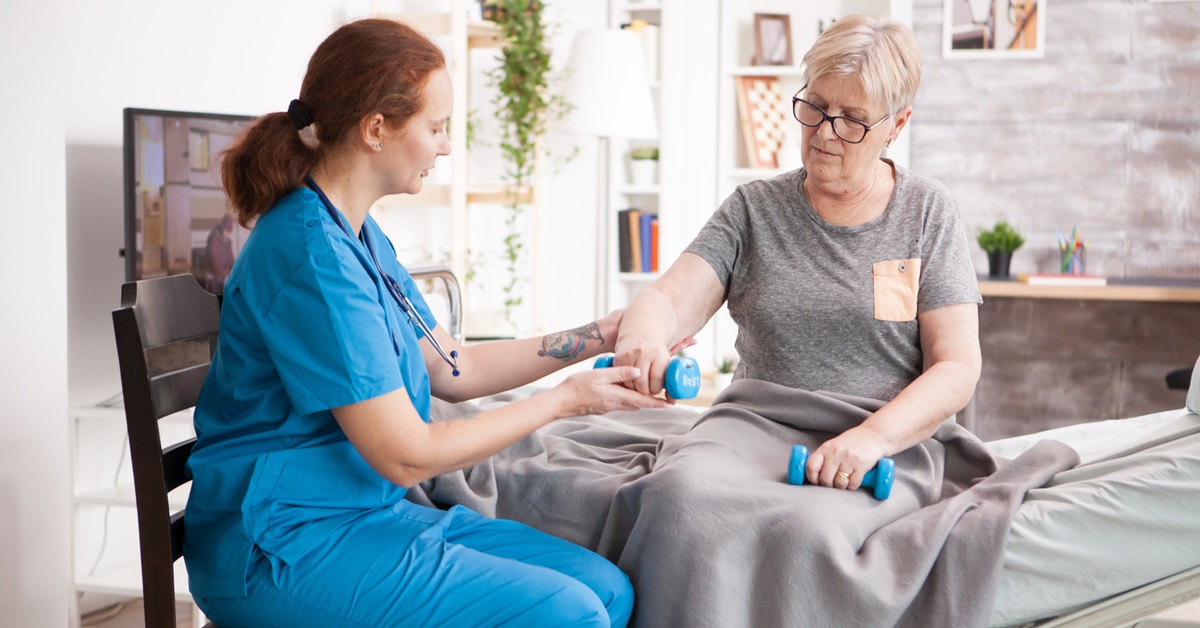Starting in 2025, hospitals will be responsible for improving the care of older patients.
The Centers for Medicare & Medicaid Services Age-Friendly Hospital Measure is a new quality measure that evaluates hospitals’ commitment to providing high-quality care for older adults by assessing their compliance with five key domains.
The five key domains include:
- Elicit patient health care goals.
- Responsibly manage medications.
- Implement frailty screening and intervention (including for cognition and mobility.
- Assess social vulnerability (e.g., social isolation, caregiver stress, elder abuse).
- Designate age-friendly leadership.
Home care can play a critical role in supporting the goals of Age-Friendly Health Systems by aligning its practices with the 4Ms Framework that is foundational to these systems. The 4Ms are: What Matters, Medication, Mentation, and Mobility.
Here’s how home care can integrate and participate in the Age-Friendly Hospital Measure:
What Matters
- Personalized Care Plans: Home care teams can collaborate with hospitals to ensure that the patient’s goals, preferences, and values are documented and consistently communicated across care transitions.
- Advance Care Planning: Encourage discussions about advance directives and ensure these are respected in the home care setting.
- Patient-Centered Care Coordination: Work with hospital discharge planners to ensure the care plan aligns with the older adult’s priorities.
Medication
- Medication Management: Home care staff can monitor medication adherence, identify potential side effects, and assess the need for simplification of medication regimens.
- Medication Reconciliation: Ensure that the medications prescribed at hospital discharge are accurately implemented and continued at home without errors.
Mentation
- Cognitive Support: Screen for cognitive issues (e.g., delirium, depression, or dementia) and report findings to the broader care team.
- Social Engagement: Provide opportunities for older adults to stay engaged through activities and companionship to reduce social isolation, which can impact mental health.
- Mental Health Referrals: Identify early signs of depression or anxiety and connect patients with appropriate mental health services.
Mobility
- Safe Environment: Evaluate the home for fall risks and modify it as needed (e.g., grab bars, non-slip rugs).
- Physical Activity Support: Work with physical therapists or provide exercises to maintain or improve mobility.
- Assistive Devices: Ensure proper use of mobility aids like walkers or canes and educate patients and caregivers on their use.
Additional Strategies for Collaboration
- Shared Communication Systems: Participate in care conferences and use shared electronic health records (EHRs) when available, ensuring smooth communication between the hospital and home care teams.
- Staff Training: Train home care staff in age-friendly principles, such as recognizing signs of delirium or medication-related issues.
- Performance Metrics: Collect and share data on outcomes related to the 4Ms to contribute to hospital quality improvement measures.
By actively integrating these strategies, home care organizations can not only improve the quality of care for older adults but also enhance collaboration with age-friendly hospitals, thereby advancing shared goals of better health outcomes. Be sure to share your participation and results with hospitals.
Other Articles You Might Enjoy
Improving Outcomes Between Home Care and Medicare Advantage Plans
Home care services have emerged as a critical strategy for improving health outcomes, reducing hospital readmissions, addressing both clinical and non-clinical needs, and improved patient satisfaction among Medicare Advantage beneficiaries.
Average 30-Day Readmission Rates by Medical Conditions
We provide critical readmission data about average readmission rates, condition-specific readmission rates, and hospitals with high and low readmission rates.
Hospital-at-Home Readmissions: Which Medical Conditions Created the Highest and Lowest Readmissions?
CMS’s report on the Acute Hospital Care at Home (AHCAH) initiative highlighted the highest and lowest readmission rates by medical conditions.





